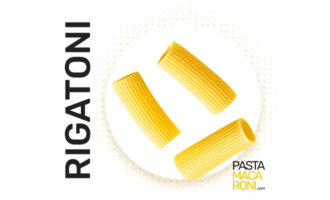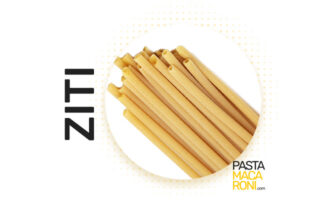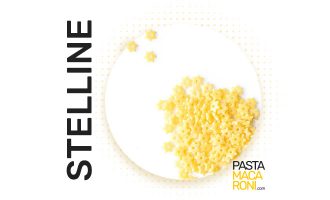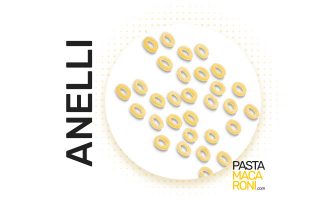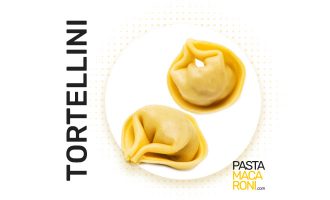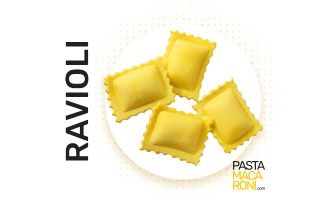Shape – short pasta in the form of a snail shell. The size of 20-30 mm in width.
Cooking time – 12 minutes (until ready).
The Pipe is suitable for meat or cheese-based sauces, salads, and casseroles. It perfectly holds the sauce and pieces of meat, vegetables.
Briefly about Pipe pasta
Pipe pasta is a type of pasta that is shaped like a snail’s shell and is traditionally made from durum wheat flour and water. It is often used in dishes such as baked ziti or pasta carbonara, and can be substituted for other types of pasta, such as rigatoni or pasta. Pipe pasta is a versatile pasta that can be combined with a wide variety of ingredients and sauces. It should be cooked in boiling salted water for 9-12 minutes. One serving of trumpet pasta contains about 200 calories, 45 grams of carbs and 7 grams of protein.
What does Pipe “snails” pasta look like 📏 The shape of Pipe pasta
A short pasta that resembles the shape of a snail shell. It is approximately 25 mm long and 1.2-1.4 mm thick.
Tube pasta is a type of pasta that is shaped like a snail shell. It is usually large and has a hollow center, making it ideal for filling with ingredients such as cheese, meat, or vegetables.

What is Pipe | Description of the pasta type
Pipe is one of the most intricate types of short dry pasta. With its appearance, it encourages culinary experiments and creativity. Pipe pasta is a type of pasta that originated in Italy. It is made from durum wheat flour and water and is traditionally shaped by pressing the dough through a die to give it the desired shape. Pipe pasta is known for its versatility because it can be used in a variety of dishes and filled with a wide variety of ingredients.
The place of appearance of this pasta format has not been precisely determined. Although there is an opinion that Pipe first appeared in Rome, another view suggests that this pasta originated in the northern part of Central Italy.
In addition to Pine rigate (ribbed pasta), there is another type of pasta that has a smooth surface, called Pipe lisce.
Features of Pipe pasta
A type of short pasta, which is a universal type of short pasta. They are unusually shaped to hold the sauce inside the pasta. Suitable with any sauce.
Pipe pasta is a type of pasta that is shaped like a snail shell. It is usually not large and has a depression in the center, which makes it ideal for cooking with ingredients such as cheese, meat or vegetables.
Pipe Pasta Substitutes
If you don’t have any pipe pasta on hand or are looking for a different type of pasta to use in a recipe, there are several options that can be substituted. Some good alternatives include rigatoni, ziti, or even short pasta. These types of pasta are similar in shape and size to tube pasta and can be used in similar dishes.
What can Pipe be combined with
Pepe combines very well with a variety of sauces that are excellent on the outside texture and inside the pasta. For example, with light cheese and seafood-based sauces as well as thick and rich meat-based sauces.
Pipe pasta is a very versatile pasta and can be combined with a wide variety of ingredients and sauces. Some classic combinations include:
- Carbonara sauce: This creamy sauce is made with eggs, cheese and bacon and goes perfectly with pasta.
- Bolognese sauce: This hearty tomato-based sauce, made with shredded meat and vegetables, is a great choice for tube pasta.
- Alfredo Sauce: This rich and creamy sauce, made with butter, cream and parmesan cheese, is a classic pairing for pipe pasta.
- Pesto: This flavorful sauce, made with basil, pine nuts and parmesan cheese, is a refreshing and delicious option for pipe pasta.
⏲️ Cooking time Pipe
- Finished – 12 minutes
- Al dente – 10 minutes
Pasta cooking time depends on the size and thickness of the pasta, as well as the level of tenderness desired. In general, you should cook the pasta in a large pot of boiling salted water for 10-12 minutes, or until it is al dente (slightly firm to the taste). Be sure to check the pasta as it cooks and taste to make sure it is cooked to your liking.
🗒️ Calories and Nutritional Value
- Energy value 1502 kJ / 359 kcal
- 2 g fats
- Carbohydrates 70 g
- Protein 14 g
Nutritional Factors (per 100g) – Pasta Barilla Pipe Rigate n.91, 450g.
Like other types of pasta, pipe pasta is a good source of carbohydrates and provides a good amount of energy. It is also a good source of several essential vitamins and minerals, including thiamine, niacin and folic acid. However, it is important to remember that the nutritional value of pipe pasta can vary depending on the specific ingredients and sauces used in the dish.
Recipes with Pipe pasta
Pipe rigate speck e patate
FAQ about Pipe Pasta
What is pipe pasta called?
Pipe rigate is a hollow, curved paste that resembles a snail’s shell. It has a wide opening at one end, and at the other end the opening is flattened so that it is mostly closed. It also has ridges on its surface.
What is rigate pasta used for?
Pipé pasta are also popular for dishes that use thicker sauces because the notch in the center and ribbed surface ensure that the sauce sticks well. Pipe rigate is a type of pasta shaped like Lumaca (snail), which thanks to its double-sided opening and characteristic ridges is ideal for mixing with less dense and more liquid sauces. Pipe Rigate pasta is particularly good with ragu sauces made of pork or beef, sausages, mushrooms.
What does pipe rigate mean in Italian?
In Italian, “pipe rigate” means “ribbed pipe.” It refers to the characteristic ridges running along the sides of the pasta, which give it a unique texture and help it hold sauces together.
How to cook Pipe Rigate pasta?
To make Pipe rigate pasta, follow these steps:
- Bring a large pot of salted water to a boil.
- Add the pasta to the pot and stir to keep it from sticking.
- Cook the pasta for 8-12 minutes, or until it is al dente (slightly firm to the taste).
- Drain the pasta in a colander and return it to the pot.
- Add your desired sauce or seasoning to the pasta and serve.
It is important to check the pasta often while it is cooking and taste it to make sure it is cooked to your liking. Cooking times may vary depending on the size and thickness of the pasta.

